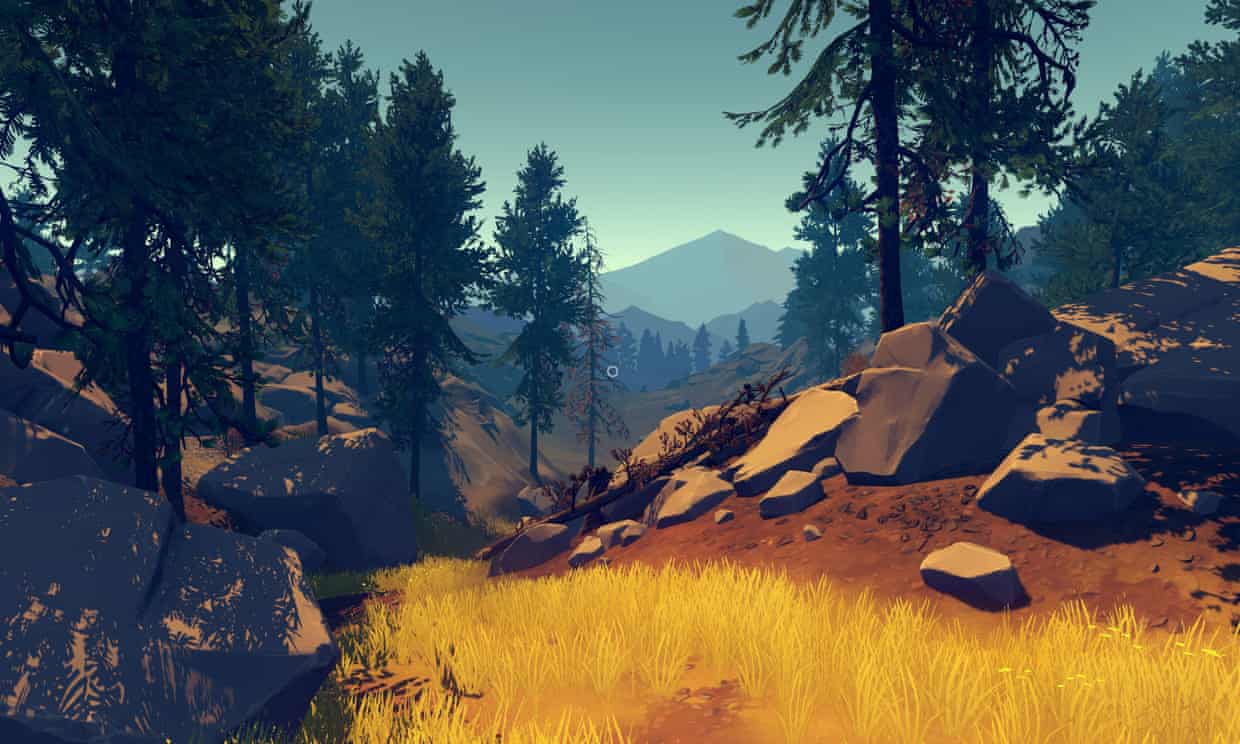A great recent example of an immersive database-interactive-narrative is a game called Firewatch.
In the game, you play a man who has chosen to take up the job of a fire lookout, to escape a troubled life. The game boosts extremely minimalistic design elements; there are very little on-screen indicators to guide the player along. You navigate the Firewatch world only from a myriad collection of conversations, record logs and a plethora of visual notes. Even though the story ultimately has a general overarching storyline, the game has been carefully crafted to provide a unique experience as each player navigates freely and randomly within the Firewatch world.
There are many design elements that have been carefully employed to provide a strangely rich and authentic experience for the player. As a fire lookout, there are many mundane tasks to carry out, like navigating from point to point, retrieving items or observing surroundings for fire breakouts. These moments, interspersed throughout the game, emulate reality in a simplistic yet effective way. Coupled with masterfully written prose that is played out while you go about your day, it almost feels like you ARE living and breathing within the Firewatch universe. The melancholy and tranquility that can be experienced anytime in-game adds a meditative, wabi-sabi-esque touch. The story has enough depth to make you sympathise for its characters, to feel genuinely sad, jealous, happy or scared.

Peeling back through the layers, the game is essentially driven by a database of words and recordings. The prose drives the gameplay seamlessly; the intriguing plot twists unfolding every step of the way. The visuals are presented in a loosely-ordered manner. Personally I have played the game for a couple of hours, and it strikes me as fascinating how a game can deliver an equally immersive experience purely by masterful writing and pacing, without fancy cutting edge tech like VR/AR, surround sound or extra fidelity graphics. In fact, the game’s visuals was just the icing on the cake. I’d imagined it would be just as effective with simple 8-bit graphics and monotone sounds.
/cdn.vox-cdn.com/uploads/chorus_image/image/56769943/firewatch_150615_05.0.0.png)
The game succeeded in being cinematic, entertaining and deeply engaging; without any shooting, driving, violence. On the contrary, you are only allowed to pick up/throw things, walk/run/jump/climb and observe your surroundings. I’d be hard-pressed to find many games that can succeed doing just that!

You must be logged in to post a comment.